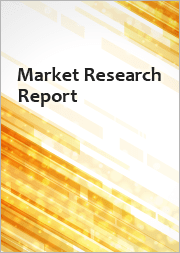
|
시장보고서
상품코드
1587715
세계의 정전기 방지 포장용 첨가제 시장 예측 : 유형별, 재료별, 최종 사용자별, 지역별 분석(-2030년)Antistatic Packaging Additive Market Forecasts to 2030 - Global Analysis By Type (Internal Additives and External Additives), Material (Polyethylene (PE), Polypropylene (PP), Polycarbonate and Other Materials), End User and By Geography |
||||||
Stratistics MRC에 따르면 세계의 정전기 방지 포장용 첨가제 시장은 2024년 5억 7,480만 달러로 추정되고, 2030년에는 7억 4,420만 달러에 이를 전망이며, 예측 기간 중 CAGR은 4.4%로 성장할 것으로 예상 예측됩니다.
정전기 방지 포장용 첨가제라는 특수 물질은 자기장을 약화하거나 완전히 제거하기 위해 포장 재료에 첨가됩니다. 정전기 축적이 민감한 전자 부품에 해를 끼치거나 최종 제품의 품질을 저하시키는 것을 막습니다. 정전기는 이러한 첨가제가 포장의 표면 전도성을 향상시키기 때문에 안전하게 발산할 수 있습니다.
전자기기 수요 증가
전자기기 제조와 디지털 기기의 급속한 보급은 정전기 방지 포장용 첨가제 수요를 크게 밀어 올리고 있습니다. 이러한 첨가제는 괴멸적인 손상을 일으킬 수 있는 정전기 방전으로부터 섬세한 전자 부품을 보호하기 위해 매우 중요합니다. 스마트폰, 컴퓨터, 게임기기 및 기타 전자기기의 생산이 증가함에 따라 정전기 방지 특성을 포함한 특수 포장 솔루션이 필요하며, 이러한 첨가제는 안전한 보관 및 운송에 필수적이기 때문에 최종적으로 시장을 활성화하고 있습니다.
제한된 인식
이 시장은 특히 중소 제조업체들 사이에서 정전기 방지 포장 요구 사항에 대한 이해가 제한적이라는 과제에 직면해 있습니다. 게다가 식품 접촉 포장 재료에 있어서의 첨가물의 사용에 관한 FDA나 EFSA등의 조직에 의한 엄격한 규제가 컴플라이언스 문제를 야기하고 있습니다. 높은 제조 비용과 복잡한 배합 요건이 가격에 민감한 분야에서의 시장 침투를 더욱 제한하고 있습니다.
자동차 산업과 소비재 산업 성장
확대되는 자동차 산업과 소비재 산업은 정전기 방지 포장용 첨가제 시장에 큰 기회를 가져오고 있습니다. 자동차, 특히 전기 자동차(EV)나 자율 주행 시스템에 있어서의 일렉트로닉스의 사용의 증가에 수반해, 섬세한 부품 보호를 위한 보호 패키지 수요가 높아지고 있습니다. 게다가 전자상거래나 온라인 소매가 견인하는 소비재 분야의 활황도, 안전한 포장의 필요성을 부추기고 있습니다. 이러한 요인들로 인해 이 시장은 제조업체에게 유리한 성장 기회를 창출할 것으로 기대됩니다.
대체 포장 솔루션의 가용성
뽁뽁이, 스티로폼 및 기타 보호 포장 방법과 같은 대체 포장 재료를 사용할 수 있다는 것은 정전기 방지 포장용 첨가제 시장의 성장에 위협이 되고 있습니다. 이러한 대체품 중에는, 보호를 위해서 첨가제를 추가할 필요가 없는 비용 효율적인 솔루션이나 보다 단순한 솔루션을 제공하는 것도 있어, 특정 업계에 매력적인 것이 되고 있습니다. 이러한 대체 포장 솔루션과의 경쟁 심화는 대전 방지 패키징용 첨가제 채택률을 둔화시켜 전체 시장 확대에 영향을 줄 수 있습니다.
COVID-19의 영향 :
COVID-19의 유행은 정전기 방지 포장용 첨가제 시장에 다양한 영향을 미쳤습니다. 제조 및 공급망 혼란으로 인해 일시적으로 수요가 감소한 반면, e커머스 및 온라인 소매 성장으로 포장 요구가 급증했습니다. 산업계가 원격 조작에 적응하고 소비자가 온라인으로 전자 기기를 구입하는 경향이 강해지기 때문에 정전기 방지 첨가제를 포함한 보호 포장 수요는 팬데믹 중과 이후에 서서히 회복했습니다.
예측 기간 동안 내부 첨가제 부문이 최대가 될 것으로 예상됩니다.
내부첨가제 분야는 일렉트로닉스, 자동차, 소비재 등 다양한 산업에서 널리 사용되고 있기 때문에 예측기간을 통해 최대 시장 점유율을 확보할 것으로 예측됩니다. 내부 첨가제는 제조 공정에서 포장 재료에 직접 배합되어 장기적인 정전기 방지 특성을 보장합니다. 대량 생산의 비용 효율성과 함께 정전기 방전에 대한 일관된 보호를 제공하는 능력은 많은 제조업체들이 선호하며 시장에서의 이점을 견인하고 있습니다.
예측 기간 동안 소비자 일렉트로닉스 분야가 가장 높은 CAGR이 예상됩니다.
소비자 전자기기 분야는 스마트폰, 태블릿, 웨어러블 등 휴대용 기기 수요 증가에 견인되어 예측 기간 동안 큰 성장이 예상됩니다. 세계 전자 시장이 지속적으로 성장함에 따라 정전기 방전으로부터 민감한 전자 부품을 보호하는 정전기 방지 포장 솔루션의 필요성이 더욱 중요해지고 있습니다. 기술의 진보와 소비 지출 증가를 뒷받침하는 이 성장은 소비자 전자기기 분야를 정전기 방지 포장용 첨가제 시장에서 가장 성장률이 높은 부문 중 하나에 위치하고 있습니다.
최대 점유율을 차지하는 지역
예측 기간 동안 아시아태평양이 가장 큰 시장 점유율을 차지할 것으로 예상되는데 이는 주로 세계 전자기기 제조업계의 지배적인 지위 때문입니다. 중국, 일본, 한국 등의 국가는 전자기기 생산의 주요 거점이며, 정전기 방지 포장용 첨가제 수요를 견인하고 있습니다. 게다가 이 지역의 자동차 및 소비재 부문의 확대가 시장의 주도권을 잡는 원인이 되고 있으며, 아시아태평양은 정전기 방지 포장용 첨가제 시장의 주요 기업이 되고 있습니다.
CAGR이 가장 높은 지역 :
아시아태평양은 급속한 산업화, 기술 진보, 일렉트로닉스 수요 증가로 예측 기간 동안 가장 높은 CAGR을 달성할 것으로 예측됩니다. 전기 자동차(EV)의 보급과 가전 소비의 증가가, 첨단 포장 솔루션의 필요성을 높이고 있습니다. 나아가 인도와 동남아시아 등 신흥국에서 전자상거래 및 전자기기 공급망 확대가 이 지역에서의 정전기 방지 포장용 첨가제 수요를 끌어올릴 것으로 예상됩니다.
사용자 정의 무료 제공 :
이 보고서를 구독하는 고객은 다음 무료 맞춤설정 옵션 중 하나를 사용할 수 있습니다.
- 기업 프로파일
- 추가 시장 기업의 종합적 프로파일링(3개사까지)
- 주요 기업의 SWOT 분석(3개사까지)
- 지역 세분화
- 고객의 관심에 응한 주요국 시장 추계, 예측 및 CAGR(주 : 타당성 확인에 따름)
- 경쟁 벤치마킹
- 제품 포트폴리오, 지리적 존재, 전략적 제휴에 기반한 주요 기업 벤치마킹
목차
제1장 주요 요약
제2장 서문
- 개요
- 이해관계자
- 조사 범위
- 조사 방법
- 데이터 마이닝
- 데이터 분석
- 데이터 검증
- 조사 접근
- 조사 정보원
- 1차 조사 정보원
- 2차 조사 정보원
- 전제조건
제3장 시장 동향 분석
- 성장 촉진요인
- 억제요인
- 기회
- 위협
- 최종 사용자 분석
- 신흥 시장
- COVID-19의 영향
제4장 Porter's Five Forces 분석
- 공급기업의 협상력
- 구매자의 협상력
- 대체품의 위협
- 신규 진입업자의 위협
- 경쟁 기업간 경쟁 관계
제5장 세계의 정전기 방지 포장용 첨가제 시장 : 유형별
- 내부 첨가제
- 이온 첨가제
- 비이온성 첨가제
- 글리세롤 모노스테아레이트
- 제4급 암모늄 화합물
- 외부 첨가제
- 코팅
- 스프레이
제6장 세계의 정전기 방지 포장용 첨가제 시장 : 재료별
- 폴리에틸렌(PE)
- 폴리프로필렌(PP)
- 폴리카보네이트
- 아크릴로니트릴부타디엔스티렌(ABS)
- 폴리염화비닐(PVC)
- 기타 재료
제7장 세계의 정전기 방지 포장용 첨가제 시장 : 최종 사용자별
- 음식
- 화장품 및 퍼스널케어
- 일렉트로닉스 및 반도체
- 자동차
- 헬스케어
- 공업용 포장
- 기타 최종 사용자
제8장 세계의 정전기 방지 포장용 첨가제 시장 : 지역별
- 북미
- 미국
- 캐나다
- 멕시코
- 유럽
- 독일
- 영국
- 이탈리아
- 프랑스
- 스페인
- 기타 유럽
- 아시아태평양
- 일본
- 중국
- 인도
- 호주
- 뉴질랜드
- 한국
- 기타 아시아태평양
- 남미
- 아르헨티나
- 브라질
- 칠레
- 기타 남미
- 중동 및 아프리카
- 사우디아라비아
- 아랍에미리트(UAE)
- 카타르
- 남아프리카
- 기타 중동 및 아프리카
제9장 주요 발전
- 계약, 파트너십, 협업 및 합작 투자
- 인수 및 합병
- 신제품 발매
- 사업 확대
- 기타 주요 전략
제10장 기업 프로파일링
- BASF SE
- Clariant AG
- Croda International Plc
- Evonik Industries AG
- 3M Company
- LyondellBasell Industries Holdings BV
- ADEKA CORPORATION
- Ampacet Corporation
- Arkema SA
- Kao Corporation
- Mitsubishi Chemical Group Corporation
- Nouryon Chemicals Holding BV
- Avient Corporation
- Solvay SA
- DuPont de Nemours, Inc.
- Dow Chemical Company
- Henkel AG & Co. KGaA
According to Stratistics MRC, the Global Antistatic Packaging Additive Market is accounted for $574.8 million in 2024 and is expected to reach $744.2 million by 2030, growing at a CAGR of 4.4% during the forecast period. Specialized substances called antistatic packaging additives are added to packaging materials in order to lessen or completely eradicate magnetic fields. They keep the accumulation of electrostatic charges from harming delicate electronic parts or lowering the caliber of the final product. Static charges can safely dissipate because of these additives' improvement of the packaging's surface conductivity.
Market Dynamics:
Driver:
Increasing demand for electronic devices
The rapid growth in electronics manufacturing and digital device adoption is driving significant demand for antistatic packaging additives. These additives are crucial for protecting sensitive electronic components from electrostatic discharge, which can cause catastrophic damage. The increasing production of smartphones, computers, gaming devices, and other electronic equipment requires specialized packaging solutions that incorporate antistatic properties, making these additives essential for safe storage and transportation, which ultimately fuels the market.
Restraint:
Limited awareness
The market faces challenges due to limited understanding of antistatic packaging requirements, particularly among small and medium-sized manufacturers. Additionally, stringent regulations by organizations like the FDA and EFSA regarding the use of additives in food-contact packaging materials create compliance challenges. The high manufacturing costs and complex formulation requirements further restrict market penetration in price sensitive areas.
Opportunity:
Growing automotive and consumer goods sectors
The expanding automotive and consumer goods industries present significant opportunities for the antistatic packaging additive market. With the increasing use of electronics in vehicles, especially in electric vehicles (EVs) and autonomous driving systems, the demand for protective packaging to shield sensitive components is rising. Additionally, the booming consumer goods sector, driven by e-commerce and online retail, is also fueling the need for secure packaging. These factors are expected to create lucrative growth opportunities for manufacturers in the market.
Threat:
Availability of alternative packaging solutions
The availability of alternative packaging materials such as bubble wraps, foams, and other protective packaging methods poses a threat to the growth of the antistatic packaging additive market. Some of these alternatives offer cost-effective or simpler solutions that do not require additional additives for protection, making them attractive to certain industries. This increased competition from alternative packaging solutions can slow the adoption rate of antistatic packaging additives and affect overall market expansion.
Covid-19 Impact:
The COVID-19 pandemic had a mixed impact on the antistatic packaging additive market. While there was a temporary decline in demand due to disruptions in manufacturing and supply chains, the growth in e-commerce and online retail created a surge in packaging needs. As industries adapted to remote operations and consumers increasingly purchased electronics online, the demand for protective packaging, including antistatic additives, witnessed a gradual recovery during and after the pandemic.
The internal additives segment is expected to be the largest during the forecast period
The internal additives segment is predicted to secure the largest market share throughout the forecast period due to its widespread use in various industries, including electronics, automotive, and consumer goods. Internal additives are blended directly into the packaging material during the manufacturing process, ensuring long-term antistatic properties. Their ability to offer consistent protection against static discharge, along with cost efficiency in mass production, has made them the preferred choice for many manufacturers, driving their dominance in the market.
The consumer electronics segment is expected to have the highest CAGR during the forecast period
The consumer electronics segment is projected to witness substantial growth during the projection period, driven by the increasing demand for portable devices, such as smartphones, tablets, and wearables. As the global electronics market continues to grow, the need for antistatic packaging solutions to protect sensitive electronic components from electrostatic discharge becomes more critical. This growth, fueled by technological advancements and rising consumer spending, positions the consumer electronics segment as one of the highest-growing segments in the antistatic packaging additive market.
Region with largest share:
The Asia Pacific region is projected to account for the largest market share during the forecast period, primarily due to its dominant position in the global electronics manufacturing industry. Countries like China, Japan, and South Korea are major hubs for electronic device production, driving the demand for antistatic packaging additives. Additionally, the region's expanding automotive and consumer goods sectors further contribute to its market leadership, making Asia Pacific a key player in the antistatic packaging additive market.
Region with highest CAGR:
The Asia Pacific region is projected to achieve the highest CAGR during the forecast period due to rapid industrialization, technological advancements, and the growing demand for electronics. The increasing adoption of electric vehicles (EVs) and rising consumer electronics consumption are fueling the need for advanced packaging solutions. Furthermore, the expansion of e-commerce and the electronics supply chain in emerging economies like India and Southeast Asia is expected to boost the demand for antistatic packaging additives in the region.
Key players in the market
Some of the key players in Antistatic Packaging Additive Market include BASF SE, Clariant AG, Croda International Plc, Evonik Industries AG, 3M Company, LyondellBasell Industries Holdings B.V., ADEKA CORPORATION, Ampacet Corporation, Arkema S.A., Kao Corporation, Mitsubishi Chemical Group Corporation, Nouryon Chemicals Holding B.V., Avient Corporation, Solvay S.A., DuPont de Nemours, Inc., Dow Chemical Company, and Henkel AG & Co. KGaA.
Key Developments:
In July 2024, Croda International Plc acquired IonPhasE, an innovative technology supplier of static electricity protection products. This acquisition supports Croda's growth strategy in the high technology and consumer-driven material markets by enhancing their portfolio with unique anti-static additives that are important for preventing damage to electrical components and improving the safety of food and chemical packaging.
In October 2023, BASF and DUO PLAST collaborated to launch the first stretch film suitable for use in potentially explosive atmospheres, which avoids static sparks by utilizing the static dissipative polymer Elastostat(R). This innovation aims to enhance safety and efficiency in packaging operations.
In October 2023, Evonik recently introduced ADDID(R) 230, a solvent-free anti-static additive that enhances electrical conductivity in coating formulations. This product shows high compatibility and is suitable even for clear coatings.
Types Covered:
- Internal Additives
- External Additives
Materials Covered:
- Polyethylene (PE)
- Polypropylene (PP)
- Polycarbonate
- Acrylonitrile Butadiene Styrene (ABS)
- Polyvinyl Chloride (PVC)
- Other Materials
End Users Covered:
- Food & Beverage
- Cosmetic & Personal Care
- Electronics & Semiconductor
- Automotive
- Healthcare
- Industrial Packaging
- Other End Users
Regions Covered:
- North America
- US
- Canada
- Mexico
- Europe
- Germany
- UK
- Italy
- France
- Spain
- Rest of Europe
- Asia Pacific
- Japan
- China
- India
- Australia
- New Zealand
- South Korea
- Rest of Asia Pacific
- South America
- Argentina
- Brazil
- Chile
- Rest of South America
- Middle East & Africa
- Saudi Arabia
- UAE
- Qatar
- South Africa
- Rest of Middle East & Africa
What our report offers:
- Market share assessments for the regional and country-level segments
- Strategic recommendations for the new entrants
- Covers Market data for the years 2022, 2023, 2024, 2026, and 2030
- Market Trends (Drivers, Constraints, Opportunities, Threats, Challenges, Investment Opportunities, and recommendations)
- Strategic recommendations in key business segments based on the market estimations
- Competitive landscaping mapping the key common trends
- Company profiling with detailed strategies, financials, and recent developments
- Supply chain trends mapping the latest technological advancements
Free Customization Offerings:
All the customers of this report will be entitled to receive one of the following free customization options:
- Company Profiling
- Comprehensive profiling of additional market players (up to 3)
- SWOT Analysis of key players (up to 3)
- Regional Segmentation
- Market estimations, Forecasts and CAGR of any prominent country as per the client's interest (Note: Depends on feasibility check)
- Competitive Benchmarking
- Benchmarking of key players based on product portfolio, geographical presence, and strategic alliances
Table of Contents
1 Executive Summary
2 Preface
- 2.1 Abstract
- 2.2 Stake Holders
- 2.3 Research Scope
- 2.4 Research Methodology
- 2.4.1 Data Mining
- 2.4.2 Data Analysis
- 2.4.3 Data Validation
- 2.4.4 Research Approach
- 2.5 Research Sources
- 2.5.1 Primary Research Sources
- 2.5.2 Secondary Research Sources
- 2.5.3 Assumptions
3 Market Trend Analysis
- 3.1 Introduction
- 3.2 Drivers
- 3.3 Restraints
- 3.4 Opportunities
- 3.5 Threats
- 3.6 End User Analysis
- 3.7 Emerging Markets
- 3.8 Impact of Covid-19
4 Porters Five Force Analysis
- 4.1 Bargaining power of suppliers
- 4.2 Bargaining power of buyers
- 4.3 Threat of substitutes
- 4.4 Threat of new entrants
- 4.5 Competitive rivalry
5 Global Antistatic Packaging Additive Market, By Type
- 5.1 Introduction
- 5.2 Internal Additives
- 5.2.1 Ionic Additives
- 5.2.2 Non-ionic Additives
- 5.2.3 Glycerol Monostearate
- 5.2.4 Quaternary Ammonium Compounds
- 5.3 External Additives
- 5.3.1 Coatings
- 5.3.2 Sprays
6 Global Antistatic Packaging Additive Market, By Material
- 6.1 Introduction
- 6.2 Polyethylene (PE)
- 6.3 Polypropylene (PP)
- 6.4 Polycarbonate
- 6.5 Acrylonitrile Butadiene Styrene (ABS)
- 6.6 Polyvinyl Chloride (PVC)
- 6.7 Other Materials
7 Global Antistatic Packaging Additive Market, By End User
- 7.1 Introduction
- 7.2 Food & Beverage
- 7.3 Cosmetic & Personal Care
- 7.4 Electronics & Semiconductor
- 7.5 Automotive
- 7.6 Healthcare
- 7.7 Industrial Packaging
- 7.8 Other End Users
8 Global Antistatic Packaging Additive Market, By Geography
- 8.1 Introduction
- 8.2 North America
- 8.2.1 US
- 8.2.2 Canada
- 8.2.3 Mexico
- 8.3 Europe
- 8.3.1 Germany
- 8.3.2 UK
- 8.3.3 Italy
- 8.3.4 France
- 8.3.5 Spain
- 8.3.6 Rest of Europe
- 8.4 Asia Pacific
- 8.4.1 Japan
- 8.4.2 China
- 8.4.3 India
- 8.4.4 Australia
- 8.4.5 New Zealand
- 8.4.6 South Korea
- 8.4.7 Rest of Asia Pacific
- 8.5 South America
- 8.5.1 Argentina
- 8.5.2 Brazil
- 8.5.3 Chile
- 8.5.4 Rest of South America
- 8.6 Middle East & Africa
- 8.6.1 Saudi Arabia
- 8.6.2 UAE
- 8.6.3 Qatar
- 8.6.4 South Africa
- 8.6.5 Rest of Middle East & Africa
9 Key Developments
- 9.1 Agreements, Partnerships, Collaborations and Joint Ventures
- 9.2 Acquisitions & Mergers
- 9.3 New Product Launch
- 9.4 Expansions
- 9.5 Other Key Strategies
10 Company Profiling
- 10.1 BASF SE
- 10.2 Clariant AG
- 10.3 Croda International Plc
- 10.4 Evonik Industries AG
- 10.5 3M Company
- 10.6 LyondellBasell Industries Holdings B.V.
- 10.7 ADEKA CORPORATION
- 10.8 Ampacet Corporation
- 10.9 Arkema S.A.
- 10.10 Kao Corporation
- 10.11 Mitsubishi Chemical Group Corporation
- 10.12 Nouryon Chemicals Holding B.V.
- 10.13 Avient Corporation
- 10.14 Solvay S.A.
- 10.15 DuPont de Nemours, Inc.
- 10.16 Dow Chemical Company
- 10.17 Henkel AG & Co. KGaA



















